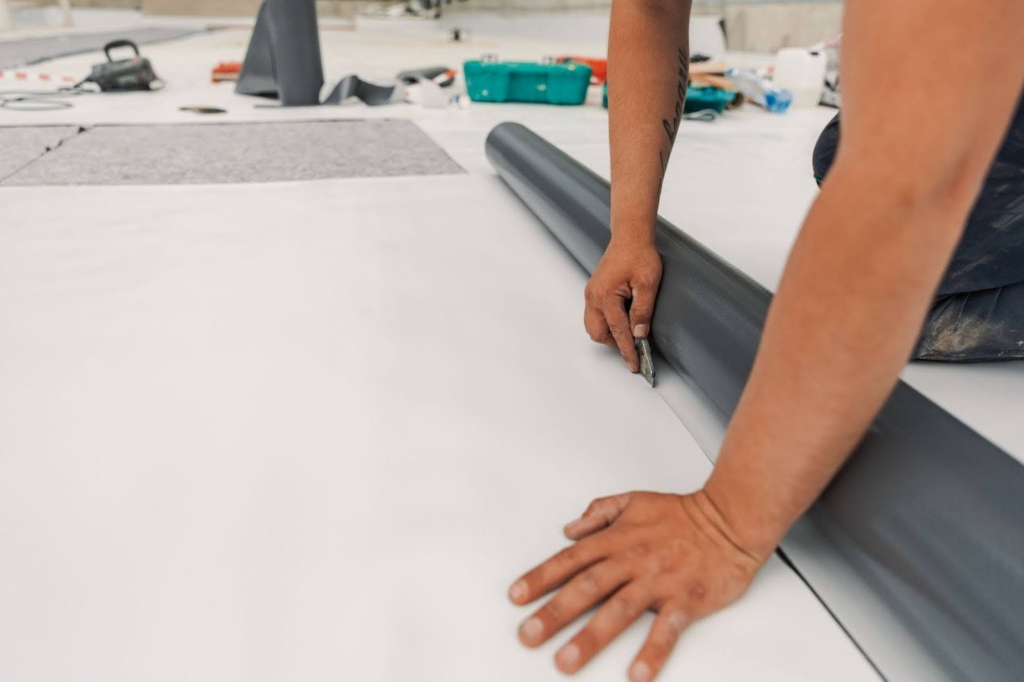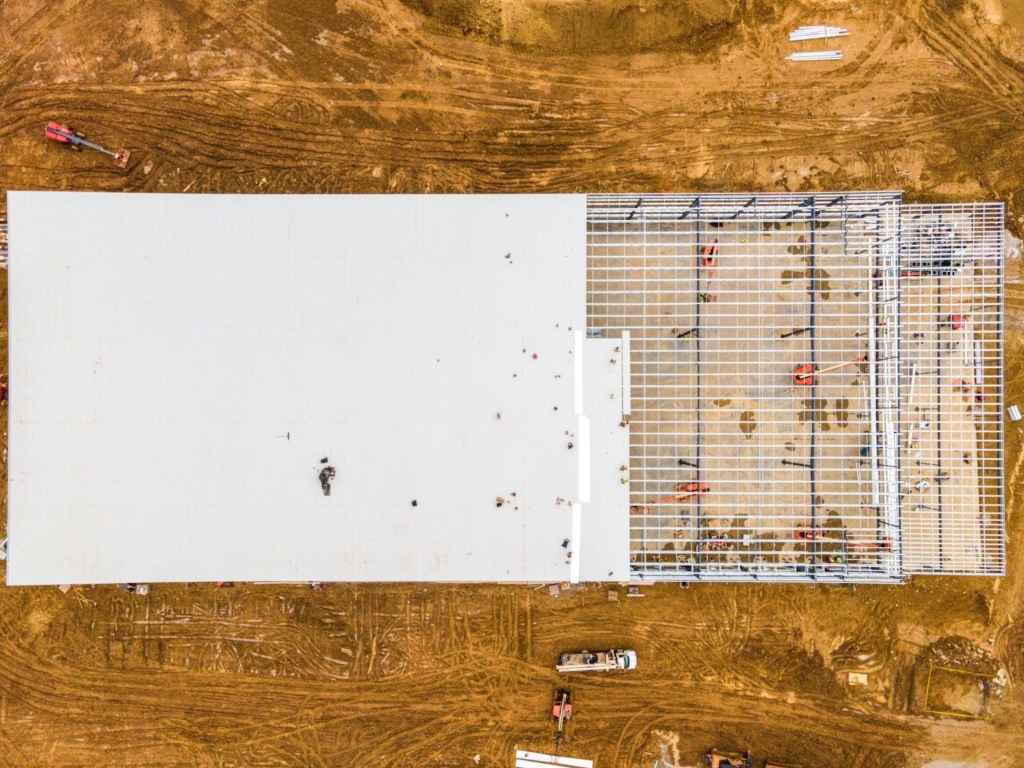Roofing decisions impact more than just a building’s look. They affect energy costs, long-term maintenance, and overall durability. For those managing flat or low-slope roofs, finding the right material can feel like a balancing act between price and performance. TPO roofing is a practical solution that meets modern energy needs and structural demands. It’s already proving its value in commercial and residential applications without fanfare or hype.
What is TPO Roofing? Understanding the Material
TPO roofing is a single-ply membrane made from thermoplastic polyolefin, designed for flat or low-slope roofs. It provides a seamless, waterproof barrier that reflects sunlight and helps cut cooling costs. Initially developed in the 1990s, TPO quickly became one of the most trusted commercial and residential construction options. Its popularity continues to grow as property owners seek efficient, affordable, and durable roofing systems that align with modern building codes.
What is TPO Roofing Membrane Made Of?
TPO roofing is a blend of polypropylene and ethylene-propylene rubber. This chemical composition yields a flexible yet durable membrane that resists UV rays, heat, and chemical exposure. TPO sheets are typically white, which reflects sunlight and helps reduce energy costs. The membrane is reinforced with polyester for added strength and is typically produced in rolls six to twelve feet wide. Each roll is heat-welded at the seams during installation to form a waterproof surface. TPO membranes meet ASTM standards for roofing performance and can last over two decades with proper installation and maintenance.
How TPO Roofing Works on Flat Roofs
TPO roofing acts as a waterproof shield for flat or low-slope roofs. Installers apply the membrane over insulation or cover boards, creating a tight barrier against water and UV exposure. The sheets are fastened mechanically or adhered using bonding agents, depending on the structure’s design and local climate. Hot-air welding bonds the seams tightly, forming a smooth, waterproof layer. Because the surface reflects UV rays, it helps regulate indoor temperatures. That makes TPO roofing ideal for commercial and residential properties in warm or sunny areas.
Advantages of TPO Roofing Systems
TPO roofing offers long-term savings through energy efficiency and low maintenance. It can resist the elements, requiring fewer repairs over its lifespan. The material is also more environmentally friendly than older roofing systems, making it an attractive option for businesses seeking sustainability.
Lowers Cooling Costs in Hot Climates
The white surface of TPO reflects sunlight instead of absorbing it, significantly lowering a building’s cooling load in hot weather. Energy savings from reduced air conditioning use quickly increase, especially for large commercial spaces. According to data from the U.S. Department of Energy, cool roofing materials like TPO can reduce annual cooling energy use by up to 15 percent. TPO also helps mitigate urban heat island effects, making it beneficial in dense city areas. For commercial buildings, lower utility bills contribute directly to improved operating margins.
H3: Durable Against Weather, Mold, and Chemicals
TPO roofing can handle extreme heat, cold, and UV exposure. It resists algae, bacteria, and mold, reducing the risk of internal water damage. The surface does not degrade quickly under chemical exposure, making it ideal for restaurants, labs, or industrial facilities. It also expands and contracts with temperature swings without cracking. The membrane is tested to withstand punctures and tears better than many older materials. A quality TPO system can last 20 to 30 years with minimal upkeep.

Cost-Effective from Installation to Maintenance
TPO is generally more affordable upfront than other flat roof systems like PVC or EPDM. Its wide sheets require fewer seams, so labor time is shorter. Because seams are hot-welded rather than glued, long-term leak resistance is better, and maintenance is simpler. Repairs, when needed, are straightforward and low-cost. Property owners often save more in the long run due to lower utility bills and fewer service calls. Over time, TPO offers an impressive return on investment.
Sustainable and Environmentally Safe Choice
TPO is fully recyclable during production and at the end of its lifecycle. It contains no chlorine or harmful plasticizers, which makes it less toxic than some alternatives. Manufacturers continue to improve formulations to reduce carbon footprints. Builders seeking to meet LEED or Energy Star requirements often opt for TPO. Its reflectivity also aligns with cool roof initiatives in California and Texas. As climate regulations tighten, TPO remains a compliant and responsible option.
TPO Roofing Installation: Step-By-Step Process
Proper installation is key to maximizing the lifespan of a TPO roof. It requires planning, inspection, and professional-grade tools. Roof size and complexity can impact timing, but most jobs are completed within just a few days.
Step 1: Remove Old Roofing and Inspect Deck
The job begins with stripping the existing roofing system down to the deck. Installers inspect for rot, moisture, or damage that could affect adhesion. If necessary, they replace damaged substrate areas before continuing. This step ensures the new roof has a stable, dry foundation. Insulation boards may also be added or replaced. Every layer added must meet local energy code requirements.
Step 2: Install Insulation and Vapor Barriers
Polyiso or EPS insulation boards are laid across the deck to improve energy efficiency. In some climates, a vapor barrier is added to prevent internal moisture buildup. The insulation is secured with plates or adhesives, depending on the method used. High-compression cover boards may be installed on top for added stability. These layers act as a thermal and impact-resistant buffer beneath the TPO membrane. Proper alignment at this stage is critical to performance.
Step 3: Lay and Weld the TPO Membrane
Installers roll out the TPO membrane across the insulated surface, aligning it for minimal seams. They secure the sheet using mechanical fasteners or full-surface adhesive. Hot-air welding tools bond each seam, creating a uniform, waterproof barrier. Penetrations like HVAC units, skylights, or drains are flashed and sealed precisely. Once welded, the seams are probed to confirm strength and watertightness. Attention to detail in this step affects long-term leak resistance.

Comparing TPO to Other Flat Roofing Options
While TPO is a popular choice, it’s often compared to EPDM and PVC systems. Each has strengths and trade-offs depending on the building’s needs, climate, and budget. Understanding these differences helps in choosing the best fit.
TPO vs. EPDM Rubber Roofing
EPDM is a black rubber membrane that absorbs sunlight, leading to higher interior heat and cooling costs in hot climates. EPDM is flexible and easy to patch, but lacks the energy-saving benefits of TPO. TPO’s welded seams also outperform EPDM’s glued seams in durability and moisture protection. EPDM may last slightly longer in cool environments, but TPO is better suited for sun-heavy areas. For commercial owners focused on energy costs, TPO is the smarter option.
TPO vs. PVC Roofing Membrane
PVC roofing is chemically resistant and ideal for grease or oil exposure environments. It’s often used in restaurants or factories but comes at a higher price. PVC contains plasticizers and chlorine, which can degrade over time and pose environmental risks. TPO is more flexible in cold temperatures and costs less to install. Both use hot-air welded seams, but TPO is gaining ground due to better environmental performance. For general-purpose use, TPO delivers similar benefits at a lower cost.
Who Should Choose TPO Roofing?
TPO roofing suits commercial, industrial, and residential properties with flat or low-slope roofs. Budget-conscious owners get reliable performance and long-term savings with it. TPO may be the right fit if your building falls into any of the following categories.
Ideal for Flat Roofs on Commercial Buildings
TPO benefits retail stores, warehouses, schools, and office buildings. It reduces operational costs, withstands foot traffic, and looks clean from above. Many property managers appreciate its low upkeep and quick installation. For multi-tenant buildings, it helps reduce HVAC strain and improve comfort. Hospitals and municipal buildings also favor it for its safety ratings and long service life. If the roof must support HVAC equipment, TPO can be reinforced for added strength.
A Smart Choice for Residential Flat Roofs
Homeowners with flat roofs often struggle with ponding water or high summer cooling bills. TPO solves both by offering water resistance and high reflectivity. Its clean look also pairs well with modern and minimalist architecture. Additionally, TPO can withstand the varying temperatures found in many U.S. regions. It adds long-term value without requiring much ongoing work. Roofing companies now offer scaled-down TPO systems for home applications.
Switch to TPO Roofing for Smarter Performance
Waiting too long invites damage you can’t always reverse. Roofs rarely give second chances once leaks spread or energy bills surge. TPO roofing offers a reliable and energy-efficient system that requires minimal upkeep. It’s engineered to last, designed to cut costs, and proven to outperform outdated materials. If your roof drains more than it protects, it’s time for a smarter option. Step ahead with a roofing system that works as efficiently as you do.
Looking to get more from your roof investment? Head to the NorthCoast Roofing Inc. blog for practical guides, updates, and expert know-how.

